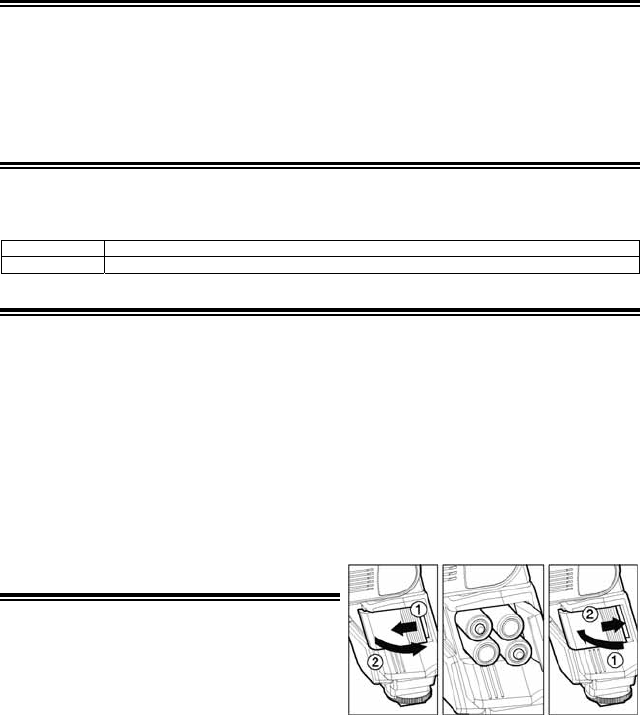
15
DESCRIPTION OF THE PARTS
EXTERNAL PARTS
1.Flash Head 2.Built-in Wide Panel 3.AF Auxiliary Light 4.Bounce Angle; Up and Down
5.Bounce Angle; Right and Left 6.Bounce Lock and Release Button; Up and Down 7.Swivel Lock
and Release Button; Right and Left 8.LCD Panel 9.Battery Cover 10.Shoe Ring 11.Shoe
CONTROLS
12.MODE Button 13.<SEL> SELECT Button 14.< + > Increment Button 15.< - > Decrement Button
16.ZOOM Button 17.TEST Button 18.LIGHT Button 19.Ready Light 20.Power Switch
CAMERA MODELS AND FUNCTIONS
Although this Flash unit has been equipped with numerous functions, depending on the camera model
being used some functions may have some limitations. Please confirm the type camera you have from the
list below. Please refer to explanations of each function through the instruction manual; If no model
information is specified, it means that this function of flash can be used with all type of EOS cameras.
A type camera E-TTL(E-TTL II) Compatible EOS SLR cameras
B type camera All other EOS cameras except those listed above
ABOUT THE BATTERY
This flash unit uses four “AA” type Alkaline dry cell batteries, Ni-Cad or Ni-MH rechargeable batteries.
Manganese batteries can also be used but as they have a shorter life than Alkaline batteries, we do not
recommend using them. Please replace batteries if it takes more than 30seconds to light the Ready Lamp.
To assure proper electrical contact, clean the battery terminals before installing the batteries.
NiCad batteries do not have standardized contacts. If you use NiCad batteries, please confirm that the
battery contacts touch the battery compartment properly.
To prevent battery explosion, leakage or overheating, use four new AA batteries of the same type and
brand. Do not mix the type or new and used batteries.
Do not disassemble or short-circuit the batteries, or expose them fire or water; they may explode. Do not
recharge the batteries other than Ni-Cd or Ni-MH rechargeable batteries.
When the flash will not be used for an extended period of time, remove the batteries from the flash to
avoid the possibility of damage from leakage.
Battery performance decreases at low temperatures. Keep batteries insulated when using the flash in cold weather.
As with any flash, it is recommended you carry spare batteries when on a long trip or when
photographing outdoors in cold weather.
BATTERY LOADING
1. Be sure to set the Power Switch to the off position
then slide the battery cover in the direction of the
arrow to open.
2. Insert four AA size batteries into the battery chamber.
Be sure the + and – ends of the batteries are aligned
according to the diagram in the chamber.
3. Close the cover.
4. Slide the Power Switch to the ON position. After few seconds the Ready Lamp will light, indicating that
the flash unit can be fired.
5. Please press the “Test Button” to be sure that the flash is working properly.
AUTO POWER OFF
To conserve battery power, the flash unit automatically turns itself off when the flash is not used within
approximately 90 seconds. To turn the flash on again, depress the “TEST” button or the camera shutter
button halfway. Please note that the “Auto Power Off” mechanism does not work with wireless TTL flash
mode, normal slave flash, and designated slave flash modes.
ERROR INDICATION
If the battery power is not sufficient or there is an electric information error between the camera and flash unit,
the “Flash Coverage Angle” will blink on the LCD panel. When this occurs, turn the power switch off and on.














